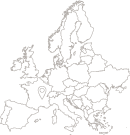Presentation
- A dozen national diplomas, up to doctoral level, including seven master’s courses, two bachelor’s degrees, one professional degree, and one basic legal qualification. These diplomas may be studied for as continuing education, as part of a return to studies or through apprenticeship or vocational contracts.
- There are two original courses for bachelor’s degree students: Law College, DE JurisPo and Medical Affairs Law course.
- A Law Institute (IEJ) which prepares students for competitive examinations and entrance examinations into the legal professions, especially that of the Law Schools (École des Avocats - EdA).
- A centre for preparing for competitive civil service examinations (CPCA) that enables students to prepare for civil service examinations under optimal conditions.
- Thirty teachers/researchers (university professors and lecturers).
- A principal research centre, CERCRID (Centre for Critical Research on the Law), a research unit associated with the CNRS, but a few researchers belong to other centres, such as TRIANGLE.
- 1645: St. Étienne sees the installation of a royal tribunal and the creation of the Seneschalty of Saint-Étienne. The legal professions (lawyers, magistrates, notaries) take on an increasingly important position in the city but are educated at the University of Valence.
- Late 19th century: St. Étienne students attend the newly-founded Faculty of Lyon.
- 1963: At the initiative of the legal professions, local elected officials and university students from St. Étienne, a university college of St. Étienne is founded based on education in the law.
- 1969: When the University of St. Étienne was founded, the Faculty of Law and Economics was already an essential component of the University.
- 1999: The jurists and economists are separated, resulting in a Faculty of Law, on the one hand, and on the other the ISEAG (which later became the IAE).


